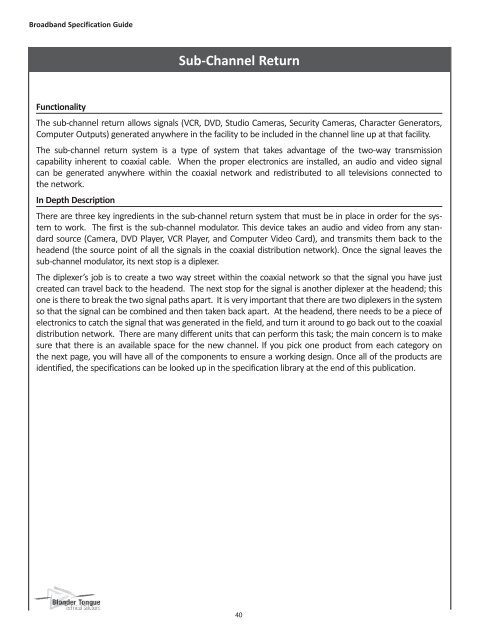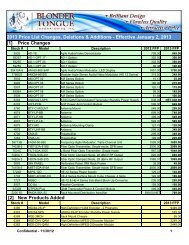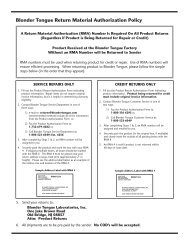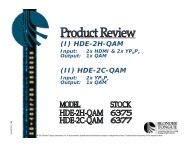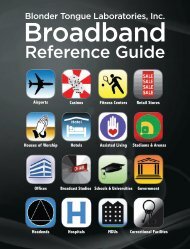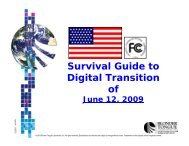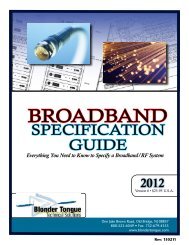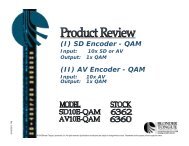Functional Block Diagram - Blonder Tongue Laboratories Inc.
Functional Block Diagram - Blonder Tongue Laboratories Inc.
Functional Block Diagram - Blonder Tongue Laboratories Inc.
You also want an ePaper? Increase the reach of your titles
YUMPU automatically turns print PDFs into web optimized ePapers that Google loves.
Broadband Specification Guide<br />
Sub-Channel Return<br />
<strong>Functional</strong>ity<br />
The sub-channel return allows signals (VCR, DVD, Studio Cameras, Security Cameras, Character Generators,<br />
Computer Outputs) generated anywhere in the facility to be included in the channel line up at that facility.<br />
The sub-channel return system is a type of system that takes advantage of the two-way transmission<br />
capability inherent to coaxial cable. When the proper electronics are installed, an audio and video signal<br />
can be generated anywhere within the coaxial network and redistributed to all televisions connected to<br />
the network.<br />
In Depth Description<br />
There are three key ingredients in the sub-channel return system that must be in place in order for the system<br />
to work. The first is the sub-channel modulator. This device takes an audio and video from any standard<br />
source (Camera, DVD Player, VCR Player, and Computer Video Card), and transmits them back to the<br />
headend (the source point of all the signals in the coaxial distribution network). Once the signal leaves the<br />
sub-channel modulator, its next stop is a diplexer.<br />
The diplexer’s job is to create a two way street within the coaxial network so that the signal you have just<br />
created can travel back to the headend. The next stop for the signal is another diplexer at the headend; this<br />
one is there to break the two signal paths apart. It is very important that there are two diplexers in the system<br />
so that the signal can be combined and then taken back apart. At the headend, there needs to be a piece of<br />
electronics to catch the signal that was generated in the field, and turn it around to go back out to the coaxial<br />
distribution network. There are many different units that can perform this task; the main concern is to make<br />
sure that there is an available space for the new channel. If you pick one product from each category on<br />
the next page, you will have all of the components to ensure a working design. Once all of the products are<br />
identified, the specifications can be looked up in the specification library at the end of this publication.<br />
40


